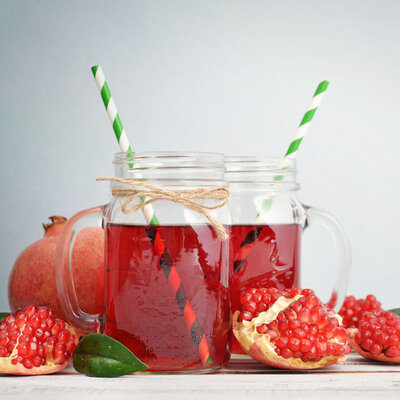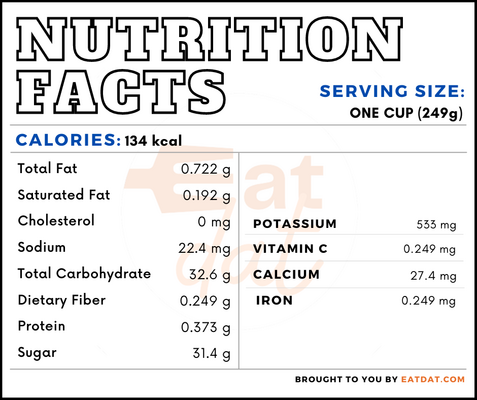
Pomegranate Juice
What is Pomegranate Juice?
Pomegranate juice is made from the seeds of the pomegranate fruit (Punica granatum). The juice is bright magenta in color and has a sweet and sour, earthy flavor. The taste varies between store-bought and fresh pomegranate juice due to the pasteurization required for bottled juice.
Some of the most popular pomegranate juice brands are:
- POM Wonderful
- Elite Naturel
- Super Granate
- Frützzo
- Heirloom Farms
- Purely Juice
- R.W. Knudsen
- L & A
- Lakewood
- Trader Joe’s
Origin of pomegranate juice
The pomegranate tree is native to Iran and north India, from where it spread through trade to Asian, African, European, Southeast Asian and Arab countries. It was introduced to the Americas by the Spanish colonists. Pomegranate is mentioned in the Bible, and was used by ancient Israelites for decorative purposes during New Year. The Chinese endowed this fruit with the significance of a fertility symbol, and Buddha is often depicted holding pomegranate, peach, and lemon. This fruit held a similar significance in Turkey, where a bride would smash a pomegranate on the ground to see how many seeds came out, which indicated how many children she would have. For the ancient Greeks, pomegranates meant rejuvenation and eternal life.
Nutrition
Nutritional value of pomegranate juice (249g):

This fuit juice is rich in vitamins C and K, folate, iron, calcium, and potassium. It has antioxidative, antimicrobial, and anti-inflammatory properties. Regular consumption of this beverage may protect against lung, breast, cervical, and prostate cancers. In addition, pomegranate juice can improve skin health and dental health, reduce obesity, and control diabetes and osteoporosis. Also, it can assist in slowing the progression of neurodegenerative disorders, such as Alzheimer’s disease. However, drinking this juice in excess may lead to rhabdomyolysis, a health condition causing muscle damage.
Commercial production
To prepare pomegranate juice, the fruit is deseeded by separating the arils from the skin. The seeds are rinsed to remove any pith that may still be attached to them. Then, they are juiced in an extractor. Finally, the juice is pasteurized before bottling. India is the largest producer of pomegranates in the world, followed by Iran, Turkey, Spain, Afghanistan, Tunisia, Morocco, and China.
Pomegranate juice recipes
This fruit juice is excellent for cooking and baking. It may be used in different dishes to bring both sweet and tart tastes to the flavor profile. Here are a few recipes:
- Pomegranate Juice
- Pomegranate Sugar Cookies
- Fruit Linzer Cookies
- Lime Slice with Fruit Frosting
- Pomegranate Cheesecake
- Fruit Glazed Dark Chocolate Shortbread
- Apple Pomegranate Cobbler
- Persian Love Cake
- Fruit Mousse Cake
- Orange and Pomegranate Cake
- Pomegranate Banana Bread
- Lemon Pancakes with Fruit Syrup
FDA regulations
According to the FDA, pomegranate juice must have at least 16 percent concentration. This fruit juice used for preparing jellies is also regulated.
References
Anderson, E.; Koppel, K.; IV, E.C. Consumer Evaluation of Processing Variants of Pomegranate Juice. Beverages 2015, 1, 3-16. https://doi.org/10.3390/beverages1010003, https://www.mdpi.com/2306-5710/1/1/3
Kandylis, Panagiotis, and Evangelos Kokkinomagoulos. “Food Applications and Potential Health Benefits of Pomegranate and its Derivatives.” Foods (Basel, Switzerland) vol. 9,2 122. 23 Jan. 2020, doi:10.3390/foods9020122, https://www.ncbi.nlm.nih.gov/pmc/articles/PMC7074153/
Lorna J. Sass, Pomegranates: Rich In History and Taste, The New York Times, https://www.nytimes.com/1979/10/31/archives/pomegranates-rich-in-history-and-taste.html
